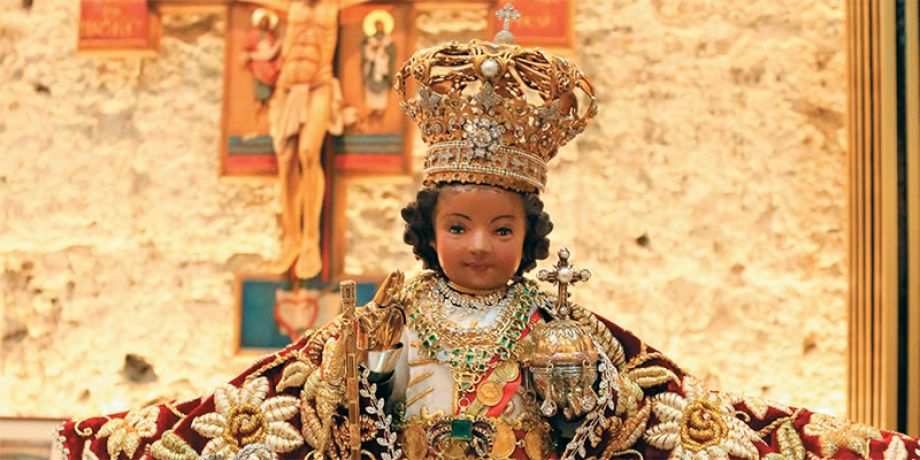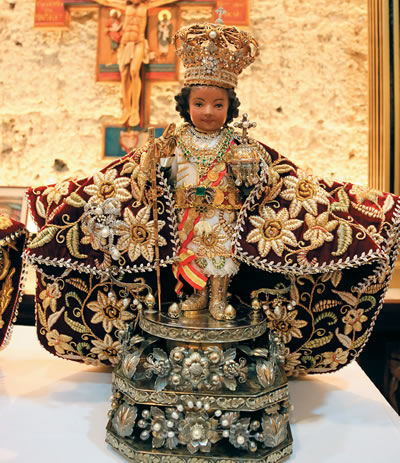
The celebration of 500 years of Christianity in the Philippines was a momentous event that needed to be celebrated and remembered. This commemoration was a good time for the reckoning of insights, graces, and faith that our ancestors cultivated, and passed on to us. From the articles and news that I read about this centenary occasion, the image of the Santo Niño stands out to me. As an Illongo who grew up as a devotee, I always see the icon at home, in the market, in business offices, restaurants or even malls. St. Niño has always been there guiding me, so I give thanks to God for all the gifts He bestowed on me especially in my seminary formation.
The statue of Santo Niño has always influenced me in my formation journey, as it had guided my ancestors to grow in their faith when they first received the statue 500 years ago. Now that I have completed my formation journey in the seminary and have embarked on a new one, it is time for me to give back. I could only do that through my loving presence and my lifelong commitment to the service of God, His people and all of creation. As Pope Francis said, “Faith is passed on by contact, from one person to another, just as one candle is lighted from another.”
 Formation in the seminary takes time, effort, and hard work. I remember entering the Columban House of Studies in 2012 and felt like I was so far from the finish line. As time went by, I realized that it is not about reaching the finish line that matters the most, but savoring the journey along the way. It is all worth it for my personal and spiritual growth and the awareness of God’s love in me. After nine years of participating in prayer life, community life, apostolate work, and study, I have been formed and molded into someone ready to commit and offer his life for the sake of the mission.
Formation in the seminary takes time, effort, and hard work. I remember entering the Columban House of Studies in 2012 and felt like I was so far from the finish line. As time went by, I realized that it is not about reaching the finish line that matters the most, but savoring the journey along the way. It is all worth it for my personal and spiritual growth and the awareness of God’s love in me. After nine years of participating in prayer life, community life, apostolate work, and study, I have been formed and molded into someone ready to commit and offer his life for the sake of the mission.
Reflecting on my formation journey in relation to the celebration of 500 years of Christianity in the Philippines, draws me to the statue of the Santo Niño because it feels like meeting Him again. According to history, the statue of the boy Jesus was a baptismal gift to Humaway, the chief wife of Rajah Humabon. Of all the material things that Magellan and his group brought, I asked myself, “Why give the image of the St. Niño?”
Thereafter, I realized the importance of the symbol that it represents. St. Niño is an image that best represents my journey as a Columban. The Child Jesus depicted in the statue reminds me of the childlike attitude that I need to cultivate as a seminarian. A child’s heart is sincere and generous. At the same time, his mind is open to learning. Years of immersing myself in the seminary formation made me inculcate several essential values in the long run.
I was taught that like the boy Jesus, I need to be reformed, to have a deeper faith in God, and a wider understanding of mission. After all, I cannot minister to people and share the joy of the Gospel to others if I am not equipped with the knowledge and awareness of the presence of God in my life. It would be like the blind leading the blind. Furthermore, the virtue of humility is an important quality. Knowing when to apologize, being able to recognize the aspects of our life we are ignorant about, and recognizing our strengths and weaknesses developed me into a person who is in touch with the reality of life.
As Pope Francis said, “Faith is passed on by contact, from one person to another, just as one candle is lighted from another.”
In my journey, there were times when academic studies were demanding and difficult. There were moments when academic papers overwhelmed me, and I was at a loss for ideas. However, my openness to learn aided me in refining my motivation to be a missionary priest. My studies are not only for my personal interests, it is also dedicated to the people of my future ministry.
Open-mindedness is one of the values I developed in formation. I remember working in the prison and hospital ministry and being confronted with difficult questions. Why does God let these people suffer? Where is the hand of God in the tragedies of their life? As much as I would like to answer them, I am not a messiah; I do not bear the knowledge that could give them sufficient answers. What I could only do, at their times of distress was to be a companion, a brother, friend or pilgrim.
Love always comes from within and from that wellspring, it will overflow to others. I cannot love someone if I do not know how to love and forgive myself. Love is inclusive. My First Mission Assignment (FMA) in Pakistan taught me that every person has dignity and deserves to be loved even if they belong to the lower caste. As a missionary, I must be capable of love for all people regardless of race, color of skin, gender, religion, and culture and for all beings created.
As an ordained deacon, my eyes are open to a wider perspective of God’s mission. Mission involves not merely giving but also receiving insights and the goodness of the people. Further “giving” also involves being present in the life of people in the ministry, rather than just the dole-out form. The best gift I could give in the mission is my effort to reach out to people with love and compassion, to advocate protection for the environment, and to promote equality and peace through mutual respect and dialogue.
My faith gets nourished by my burning desire and commitment to encounter God, and it is through my daily encounters with people that I meet Jesus. Sometimes, I find myself in doubt or lacking in my knowledge of God, but all I have to do is look at the statue of the Santo Niño and draw inspiration from it.
Columban seminarian Elbert Balbastro studies in Manila, Philippines.